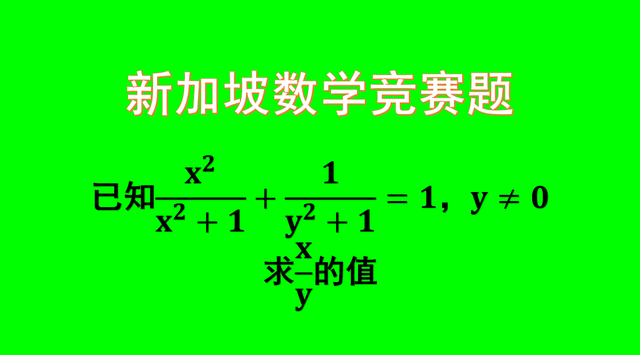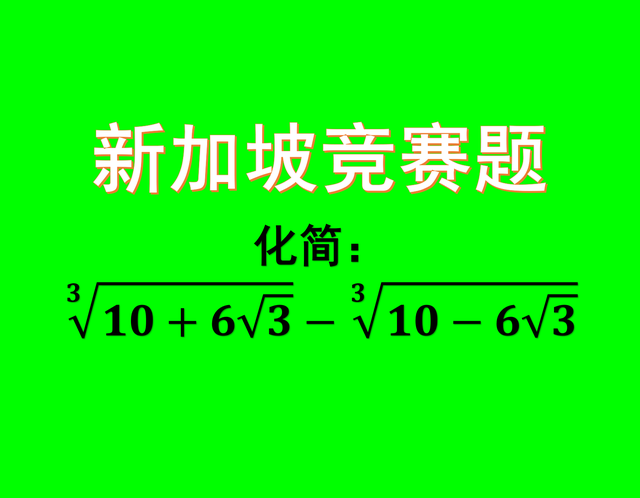新加坡政府中学一年级数学大纲

新加坡剑桥O水准考试(Singapore-Cambridge General Certificate of Education Ordinary Level Examinations,简称GCE ‘O’ Level),是由新加坡教育部MOE和新加坡考试与评鉴局SEAB共同主办的国家级统一考试,也是新加坡的中学生在4年中学教育结束后参加的考试。
考试一年举办一次,考生可以用获得的成绩为标准申请进入新加坡初级学院、理工学院或工艺教育学院。考试成绩也为英联邦各个国家所承认和接受,可用于申请海外英联邦国家的初级学院或是大学预备班。
贯穿新加坡中学四年教育的,仍是3+1的教学体系,三大模块数学知识和贯穿始终的数学过程思维训练,如下图所示。

数学过程思维这一环节最为关键的是思维技巧和策略思维方法。这部分内容是要求学生在掌握数学知识点的基础上,能活学活用,经过训练,学会常用的思维方法。
新加坡中学一年级的知识点如下。
一、代数部分N1. Number & operations 数及运算
1.1. primes and prime factorisation 质数和质因数分解
1.2. finding highest common factor (HCF) and lowest common multiple (LCM), squares, cubes, square roots and cube roots by prime factorisation
1.3. negative numbers, integers, rational numbers, real numbers and their four operations 通过质因数分解求最大公因子、最小公倍数、平方数、立方数、平方根、立方根
1.4. calculations with calculator 使用计算器
1.5. representation and ordering of numbers on the number line 在数轴线上对数进行标注和排序
1.6. use of <,>, ≤, ≥ 使用<,>, ≤, ≥符号
1.7. approximation and estimation (including rounding off numbers to a required number of decimal places or significant figures, and estimating the results of computation)
近似计算和估算(包括按要求对特定数位及小数位或有效数字进行取整,及估算结果)
N2. Ratio & proporation 比率和比例
2.1. ratios involving rational numbers
有理数比率
2.2. writing a ratio in its simplest form
比率的最简单形式,化简
2.3. problems involving ratio
涉及比率的问题求解
N3. Percentage 百分比
3.1. expressing one quantity as a percentage of another
将数量写成百分比形式
3.2. comparing two quantities by percentage
按百分比比较两个量(数量)
3.3. percentages greater than 100%
多于100%的百分比
3.4. increasing/decreasing a quantity by a given percentage (including concept of percentage point)
用给定的百分比增减某个量
3.5. reverse percentages
反向百分比
3.6. problems involving percentages
百分比问题求解
N4. Rate & Speed 速率
4.1. concepts of average rate, speed, constant speed and average speed
平均速率、恒定速率的概念
4.2. conversion of units (e.g. km/h to m/s)
速度单位转换
4.3. problems involving rate and speed
速度/速率问题求解
N5. Algebraic expression & formulate 代数表达式
5.1. using letters to represent numbers
用字母代表数字
5.2. interpreting notations:

解析上述标记
5.3. evaluation of algebraic expressions and formulae
计算代数表达式,表达式规范化
5.4. translation of simple real-world situations into algebraic expressions
将现实场景转换为代数表达式
5.5. recognising and representing patterns/relationships by finding an algebraic expression for the nth term
识别模式关系,并能含第N项的代数表达式呈现
5.6. addition and subtraction of linear expressions
线性表达式的加减法
5.7. simplification of linear expressions
线性表达式化简
5.8. use brackets and extract common factors
使用括号,及提取公因式
N6. Functions & graphs 函数和图
6.1. Cartesian coordinates in two dimensions
二维迪卡尔坐标系
6.2. graph of a set of ordered pairs as a representation of a relationship between two variables
用给定的代表两元变量关系的数对作图(在坐标系上绘制点线)
6.3. linear functions = +
一元线性函数
6.4. graphs of linear functions
线性函数对应的图
6.5. the gradient of a linear graph as the ratio of the vertical change to the horizontal change (positive and negative gradients)
线性图对应的斜率
N7. Equations & inequities 等式和不等式
7.1. concept of equation
等式的概念
7.2. solving linear equations in one variable
求解一元线性等式
7.3. solving simple fractional equations that can be reduced to linear equations
求解简单分数方程(可化简为线性等式的)
7.4. formulating a linear equation in one variable to solve problems
规范化线性等式,并求解
二、几何和测量G1. Angles, triangles & polygons 角度/三角形/多边形
1.1. right, acute, obtuse and reflex angles
直角、锐角、钝角和reflex angles
1.2. vertically opposite angles, angles on a straight line, angles at a point
1.3. angles formed by two parallel lines and a transversal: corresponding angles, alternate angles, interior angles
平行线与直线相交形成的角
1.4. properties of triangles, special quadrilaterals and regular polygons (pentagon, hexagon, octagon and decagon), including symmetry properties
三角形、特殊四边形、正多边形的性质
1.5. classifying special quadrilaterals on the basis of their properties
依据特性对特殊四边形分类
1.6. angle sum of interior and exterior angles of any convex polygon
凸多边形的内角和/外角和
1.7. construction of simple geometrical figures from given data using compasses, ruler, set squares and protractors, where appropriate
使用圆规、直尺、半圆板等工具绘制几何图形
G2. Mensurations
5.1. area of parallelogram and trapezium
平行四边形和梯形的面积
5.2. problems involving perimeter and area of composite plane figures
组合平面图形的面积及周长问题求解
5.3. volume and surface area of prism and cylinder
棱柱和圆柱体的体积和表面积
5.4. conversion between cm2 and m2 , and between cm3 and m3
cm2 和m2 ,cm3 和m3单位转换
5.5. problems involving volume and surface area of composite solids
组合立体形状的体积及表面积问题求解
三、统计和概率
S1. Data handling & analysis 数据处理和分析
1.1. simple concepts in collecting, classifying and tabulating data
数据采集、分类和图表化的基本概念
1.2. analysis and interpretation of:
tables
bar graphs
pictograms
line graphs
pie charts
分析并解析图表、棒图、折线图和饼图
1.3. purposes and uses, advantages and disadvantages of the different forms of statistical representations
陈述不同形式的统计呈现方式的目的、用途和优缺点
1.4. explaining why a given statistical diagram leads to misinterpretation of data
陈述为何某些特定的统计图会导致误读数据























评论